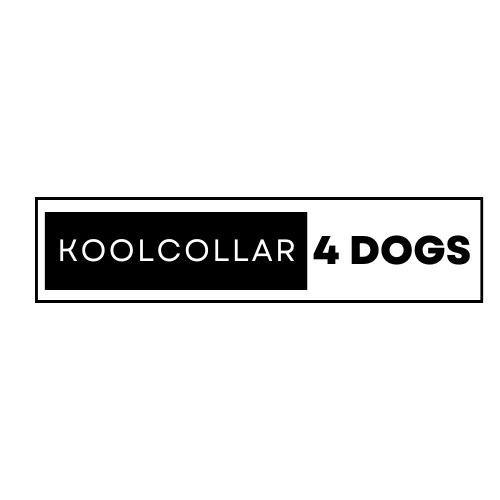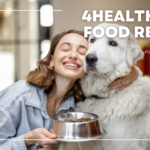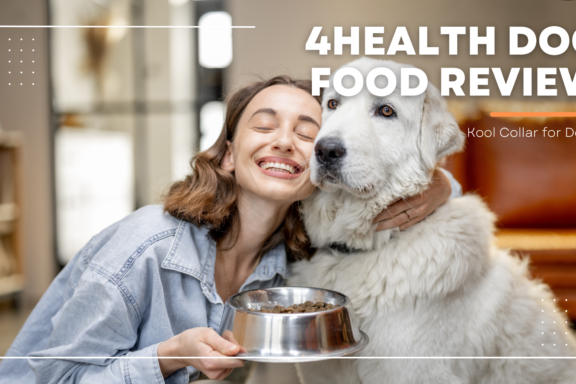
ExperienceFeeding our furry companions is more than just a daily chore; it’s an opportunity to nourish their bodies and delight their senses. As pet parents, we’re often faced with the choice between the best wet dog food to mix with dry. But what if we could offer our canine friends the best of both worlds? This comprehensive guide explores the benefits of combining wet and dry dog food, helping you make informed decisions about your pet’s diet.
Understanding Canine Nutrition Basics
Before delving into the intricacies of mixing wet and dry dog food, it’s crucial to grasp the fundamentals of canine nutrition. Dogs, like humans, require a balanced diet to thrive. This balance includes proteins, carbohydrates, fats, vitamins, and minerals.
The Role of Proteins
Proteins are the building blocks of your dog’s body, essential for muscle development, tissue repair, and overall growth. High-quality animal proteins should form the cornerstone of your dog’s diet.
Importance of Carbohydrates
While dogs don’t necessarily need carbohydrates in large quantities, they can provide energy and fiber. Complex carbohydrates are preferable to simple sugars.
Healthy Fats for Canine Wellness
Fats are a concentrated source of energy. They help in the absorption of fat-soluble vitamins and contribute to skin and coat health.
Vitamins and Minerals
These micronutrients play vital roles in various bodily functions, from bone strength to immune system support.
Dry Dog Food: A Closer Look
Dry dog food, known as kibble, has been a staple in canine diets for decades. Let’s examine its characteristics and benefits.
Composition of Dry Dog Food
Dry dog food typically contains less than 11% moisture. It’s made by combining and cooking ingredients and then extruding them into small, bite-sized pieces.
Advantages of Kibble
Kibble offers several benefits:
- Long shelf life
- Convenience in storage and serving
- Cost-effectiveness
- Dental health benefits (through mechanical abrasion)
Nutritional Density
Due to its low moisture content, dry dog food is often more calorically dense, meaning a smaller volume can provide substantial nutrition.
Variety in Dry Food Options
The market offers a wide range of dry food options, catering to different life stages, breed sizes, and specific health conditions.
Wet Dog Food: Delving into the Details
Wet dog food, with its higher moisture content, brings its own set of advantages to the table. Let’s explore what makes it a popular choice among pet owners.
Composition of Wet Dog Food
Wet food contains over 11% moisture and often comes in cans or pouches. It can be found in various textures, from pâtés to chunky meat in gravy.
Palatability and Aroma
The strong aroma and texture of wet food often make it more appealing to dogs, especially those with diminished senses of smell or appetite.
Hydration Benefits
The high moisture content in wet food can contribute to your dog’s daily water intake, which is particularly beneficial for dogs prone to urinary issues.
Ease of Consumption
Wet food is easier to eat for dogs with dental issues, small jaws, or those recovering from illness.
The Art of Mixing: Combining Wet and Dry Dog Food
Now that we’ve explored both types of food individually, let’s discuss the benefits and techniques of combining them.
Why Consider Mixing?
Mixing wet and dry dog food can offer the best of both worlds:
- Enhanced palatability
- Balanced nutrition
- Increased moisture intake
- Dental benefits of dry food
- Cost-effective compared to an all-wet diet
Proper Mixing Ratios
The ideal ratio of wet to dry food can vary depending on your dog’s needs. A common starting point is 75% dry to 25% wet, but consult your veterinarian for personalized advice.
Transitioning to a Mixed Diet
When introducing a new feeding routine, gradual transitions are key. Start by adding small amounts of wet food to the dry kibble, increasing the proportion over time.
Calorie Considerations
Remember that wet food is less calorically dense than dry food. Adjust portions accordingly to maintain your dog’s ideal weight.
Tailoring the Mix: Special Considerations
Every dog is unique, and their dietary needs can vary based on various factors. Let’s explore how to customize your mixing approach.
Age-Specific Mixing
Puppies, adult dogs, and seniors have different nutritional requirements. Adjust your mixing strategy accordingly.
Breed Size and Activity Level
Large, active breeds may benefit from a higher proportion of calorie-dense dry food, while smaller or less active dogs might do well with more wet food.
Health Conditions and Dietary Restrictions
Dogs with specific health issues may require special consideration in their diet. Always consult with a veterinarian before making significant changes.
Addressing Picky Eaters
For finicky dogs, experimenting with different wet food flavors and textures can make mealtimes more enticing.
Storage and Safety: Keeping Mixed Meals Fresh
Proper storage is crucial when combining wet and dry dog food to ensure freshness and prevent spoilage.
Refrigeration Guidelines
Opened wet food should be refrigerated and used within 3-5 days. Only mix what your dog will consume in one sitting.
Avoiding Bacterial Growth
Don’t leave mixed food out for extended periods, especially in warm weather. Discard any uneaten mixed food after 2 hours.
Portioning and Meal Prep
Consider pre-portioning mixed meals for convenience, but ensure they’re stored properly and used within a safe timeframe.
Maintaining Kibble Freshness
Store dry food in an airtight container in a cool, dry place to preserve its nutritional value and prevent staleness.
Nutritional Balance: Ensuring Complete Diet
When mixing wet and dry dog food, it’s essential to maintain a balanced diet that meets all of your dog’s nutritional needs.
Reading Labels and Understanding Ingredients
Familiarize yourself with dog food labels and ingredient lists to make informed choices about the products you’re combining.
Complementary Nutrition
Choose wet and dry foods that complement each other nutritionally, filling any gaps that might exist in either type alone.
Avoiding Over-Supplementation
Be cautious not to over-supplement when mixing foods, as this can lead to nutritional imbalances.
Monitoring Your Dog’s Response
Pay attention to your dog’s weight, energy levels, and overall health when introducing a mixed diet. Adjust as necessary based on their response.
Top Wet Dog Food Brands to Mix with Dry
To help you get started, here are some top-rated wet dog food brands that can be effectively mixed with dry kibble:
- Purina ONE SmartBlend Wet Dog Food: This high-quality wet food features real meat as the first ingredient and a balanced blend of nutrients to complement dry kibble.
- Blue Buffalo Wilderness Wet Dog Food: Made with real meat and without any by-products or artificial preservatives, this wet food is an excellent choice for mixing with dry.
- Wellness CORE Wet Dog Food: Featuring a protein-rich formula with added superfoods, this wet food can help boost the nutritional value of your dog’s mixed diet.
- Merrick Grain-Free Wet Dog Food: With a variety of flavors and a focus on whole, natural ingredients, Merrick’s wet food is a great option for mixing with dry.
- Instinct by Nature’s Variety Raw Boost Wet Dog Food: This raw-inspired wet food can add moisture and a boost of nutrients to your dog’s dry kibble.
Cost Considerations: Balancing Budget and Nutrition
While mixing wet and dry food can be beneficial, it’s important to consider the financial aspects of this feeding strategy.
Comparative Costs
Generally, wet food is more expensive than dry food. Calculate the overall cost of a mixed diet compared to your current feeding routine.
Value for Money
Consider the nutritional value and benefits provided by each type of food when assessing cost-effectiveness.
Bulk Buying and Sales
Look for opportunities to buy in bulk or take advantage of sales to manage costs while maintaining quality.
Long-Term Health Benefits
Factor in potential long-term health benefits that may offset initial higher costs of a mixed diet.
Common Misconceptions About Mixing Dog Foods
There are several myths surrounding the practice of mixing wet and dry dog food. Let’s address and debunk some of these misconceptions.
Myth: Mixing Causes Digestive Issues
While sudden dietary changes can upset a dog’s stomach, the gradual introduction of mixed feeding is usually well-tolerated.
Myth: Wet Food Alone Causes Dental Problems
While dry food can help with dental health, proper dental care involves more than just food choice. Regular brushing and dental check-ups are crucial.
Myth: All Wet Foods Are Created Equal
Just like dry foods, wet dog foods vary greatly in quality and nutritional value. Choose high-quality options for optimal health benefits.
Myth: Mixed Diets Are Always More Expensive
While wet food is generally pricier, a thoughtfully planned mixed diet can be cost-effective in the long run, especially considering potential health benefits.
Expert Opinions: What Veterinarians Say
Veterinary professionals often have valuable insights on mixing wet and dry dog food. Here’s what some experts in the field have to say.
Balanced Nutrition Perspective
Many vets agree that a well-planned mixed diet can provide comprehensive nutrition, catering to both health needs and palatability preferences.
Individualized Approach
Veterinarians stress the importance of tailoring the diet to each dog’s specific needs, considering factors like age, breed, and health status.
Dental Health Considerations
While some vets recommend dry food for dental benefits, others emphasize that a mixed diet can still support oral health when combined with proper dental care.
Hydration Benefits
Many veterinarians appreciate the additional moisture intake that comes with incorporating wet food into a dog’s diet.
Making the Switch: A Step-by-Step Guide
If you’re considering transitioning to a mixed feeding approach, follow these steps for a smooth changeover.
Step 1: Consult Your Veterinarian
Before making any significant changes to your dog’s diet, always consult with your vet to ensure it’s appropriate for your pet.
Step 2: Choose High-Quality Foods
Select premium wet and dry dog foods that complement each other nutritionally.
Step 3: Start Gradually
Begin by adding small amounts of wet food to your dog’s regular dry food, slowly increasing the proportion over time.
Step 4: Monitor Your Dog’s Response
Pay close attention to your dog’s reaction, including appetite, digestion, and energy levels.
Step 5: Adjust as Needed
Be prepared to fine-tune the ratio and portions based on your dog’s individual needs and preferences.
Conclusion: Embracing the Best of Both Worlds
Mixing wet and dry dog food can offer a multitude of benefits, from enhanced palatability to improved hydration. By understanding the advantages of each food type and how to combine them effectively, you can provide your canine companion with a diet that’s both nutritious and enjoyable. Remember, every dog is unique, so what works for one may not work for another. Always consult with your veterinarian and pay attention to your dog’s individual needs when making dietary decisions. With careful consideration and proper implementation, a mixed feeding approach can contribute to your dog’s overall health and happiness, making mealtimes a tail-wagging experience for years to come.



